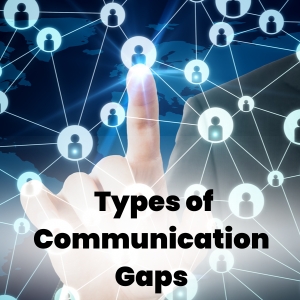Announcement
We are excited to announce the Indus Hackathon 2025, an exhilarating one-day event organized by the CSE Department of Indus University....Read more We are excited to announce the Indus Hackathon 2025, an exhilarating one-day event organized by the CSE Department of Indus University.
26th ISTE Faculty Annual State Convention will be held at Indus University on April 27, 2023....Read more 26th ISTE Faculty Annual State Convention will be held at Indus University on April 27, 2023.
26th ISTE GUJARAT STATE ANNUAL FACULTY CONVENTION & CONFERENCE ON APRIL 27,2023. MORE DETAILS WILL BE SHARED SOON....Read more 26th ISTE GUJARAT STATE ANNUAL FACULTY CONVENTION & CONFERENCE ON APRIL 27,2023. MORE DETAILS WILL BE SHARED SOON.
We are excited to announce the Indus Hackathon 2025, an exhilarating one-day event organized by the CSE Department of Indus University....Read more We are excited to announce the Indus Hackathon 2025, an exhilarating one-day event organized by the CSE Department of Indus University.
26th ISTE Faculty Annual State Convention will be held at Indus University on April 27, 2023....Read more 26th ISTE Faculty Annual State Convention will be held at Indus University on April 27, 2023.
26th ISTE GUJARAT STATE ANNUAL FACULTY CONVENTION & CONFERENCE ON APRIL 27,2023. MORE DETAILS WILL BE SHARED SOON....Read more 26th ISTE GUJARAT STATE ANNUAL FACULTY CONVENTION & CONFERENCE ON APRIL 27,2023. MORE DETAILS WILL BE SHARED SOON.

Effective communication is the backbone of any successful organization. It is the essential link connecting all members, departments, and stakeholders, generating collaboration and achieving common objectives. However, a communication gap within an organization can pose significant challenges, limiting progress and slowing the realization of its goals. Let's explore the various aspects of communication gaps and their considerable impact on organizational goal achievement, focusing on effective strategies to address and overcome these barriers.
Folks at the Indus Institute of Management Studies have been studying these tactics and perfecting them. Let's observe how you can do the same!
Communication gaps can manifest in different ways within an organization. The most common types include:
Each type of gap can lead to specific challenges, such as misunderstandings, lack of coordination, and misalignment of goals.

One of the most critical consequences of a communication gap is clarity regarding organizational goals. When communication fails, the team members may not be aware of the purpose and objective of a particular task. This could lead to mistakes and many blunders. This misalignment can lower the overall organizational focus, hindering progress and making it challenging to achieve critical milestones.

A communication gap within an organization can profoundly impact productivity and efficiency. Delayed notifications and mismatched work can prevent small tasks from using much precious time. The result might get misdelivered, which could cause a Re-Do, affecting the team's morale and will cause a steep decline in productivity and efficiency.
To complete tasks, proper communication is essential. Still, if that is not happening, employees might be overworking for a task and unable to communicate their problems and issues. This would result in a steep decline in employee morale and engagement.
Communication gaps can significantly affect customer experience, vital for an organization's success. When employees need more clarity on customer requirements or communicate effectively with customers, service delivery can improve. Only accurate information provided to customers can lead to satisfaction, deteriorating customer trust and loyalty. Negative customer experiences can quickly spread through word-of-mouth, causing harm to the organization's reputation and affecting its ability to attract and retain customers.
Bridging communication gaps within an organization takes time and effort. The size and complexity of the organization and the presence of different cultures and languages can worsen communication barriers. Moreover, the need for appropriate communication channels or platforms may inhibit efficient information flow. Overcoming these challenges requires a bold and strategic approach.


Effective communication is important for organizations to ensure everyone comprehends each other. At IIMS, we focus on training our students to communicate in a way that will help them in the future, not just for tests.
Looking at real examples of organizations that had concerns communicating and then fixing the problem can teach us a lot about how important good communication is for achieving goals. These examples will show us what challenges those organizations faced, how they fixed the communication problem, and what good things happened. By learning from real-life situations, students can better understand why it's so important to communicate well for a business or organization to succeed.
Simply put, when people talk poorly, it can mess up how a company gets things done. This can lead to people needing to work together better, being less productive, feeling disconnected, and making customers unhappy. So, it's essential to be proactive and have straightforward ways of talking to each other, encourage people to speak up, and give everyone training. By doing this, everyone can work together happily and improve things. Fixing problems with talking can help a company be successful in the long run.
To learn more about the world of management, or if you witnessed just a spark of interest when reading this article about a glimpse into the efficient world of management. Check out the courses at IIMS (Indus Institute of Management Studies) for further information. This article was nothing but a small glimpse; the learning possible at IIMS courses is limitless and waiting for you to grab the opportunity, although it will only take a while. Shape your future how you want. Check out the Indus institute of Management studies.
